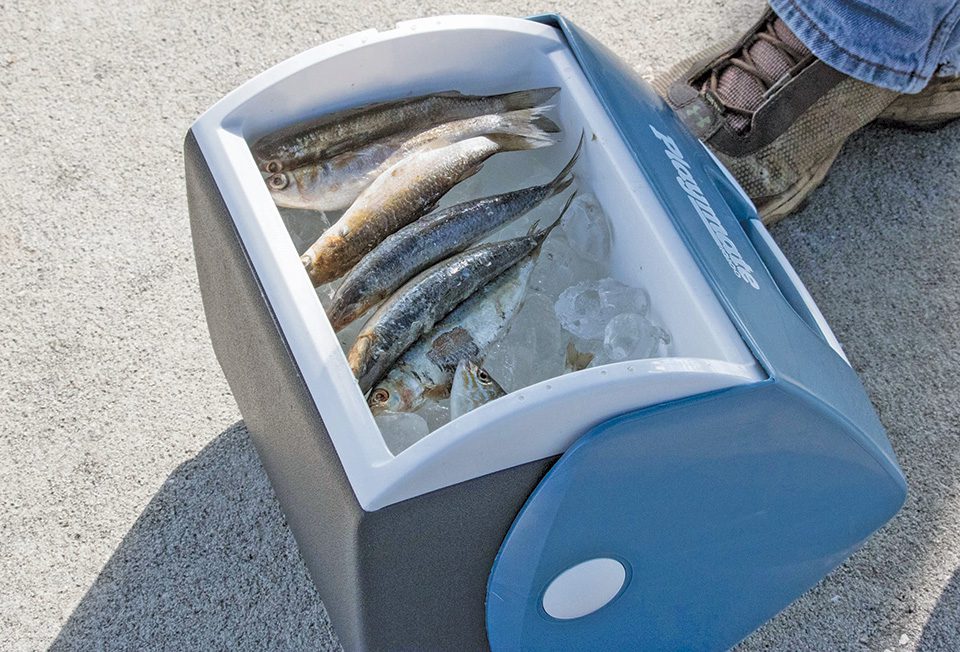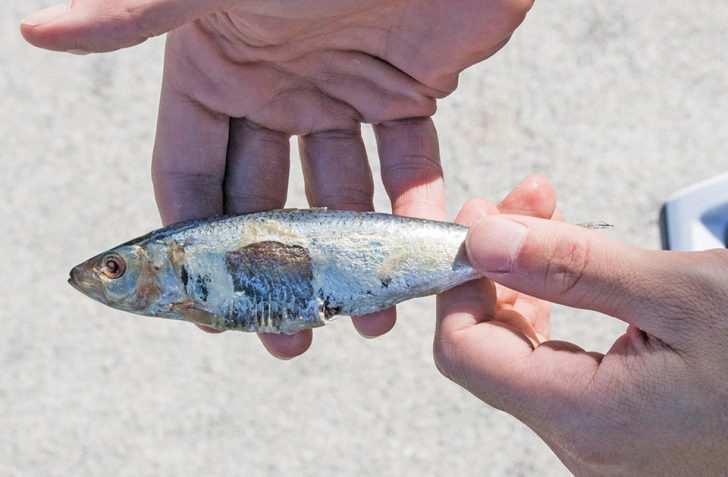By John Saporito
The quality of the bait you use is one of the most important factors in fishing. It might decide whether a trophy fish takes your line or passes you by. When it comes to fishing with dead baitfish, quality is key. No matter if you are buying from a tackle shop or sifting through a cooler of baitfish you caught yourself, it’s important to know what to look for to confirm what you use is in good condition. The following is a list of things you should check for each time you consider buying, storing or fishing with dead baitfish.
Body: Your baitfish should have no punctures, wounds or cuts of any kind. The bait should be whole and completely intact. Bodily damage is a sign of poor capture and handling, both of which can detract from overall quality.
Gills: The gills of your baitfish should be bright red or purple-red and fresh looking. If they are dull and have faded or started to turn brown, then the bait is past its prime. Your dead bait should look as if it was recently alive, and the condition of the gills is one of the best indicators of freshness.
Color: Just like with its gills, the color of your baitfish should be the same as it was when the creature was alive. If the body color is no longer vibrant and glossy—if it has started to fade and dull—then the bait is no longer worth using. Bait that is handled and stored properly from the start will hold its quality well and this will be reflected in its color. Use your best judgement; if it doesn’t look like the bait was just plucked fresh from the water, it should be avoided.
Eyes: The eyes are an easy clue to the quality of a baitfish. They should be clear, in place and feature their original color. Poorly kept or old bait may have cloudy eyes, discolored eyes, or eyes that have sunken into the fish’s head.
Texture: The bait’s texture should be firm, not soft or mushy. On the other end of the spectrum, it shouldn’t be dried out and rock-hard, either. It should feel natural. A baitfish’s scales should be in place and not flaking off, loose or missing. Texture, as with the bait’s other characteristics, should be as close to that of the living creature as possible.
Slime Coat: All live fish have a slime coat, and thus all quality baitfish must have one as well. This simple but critical element is largely responsible for the effectiveness of the bait you use. When you handle a bait, you should be able to easily feel if its slime coat is present. If your baitfish is missing it, then it is not worth using. The slime coat creates a scent slick and also provides visibility for your bait underwater.
John Saporito is a lifelong fisherman and student of the seas. Visit him online at guerillaangling.com.

